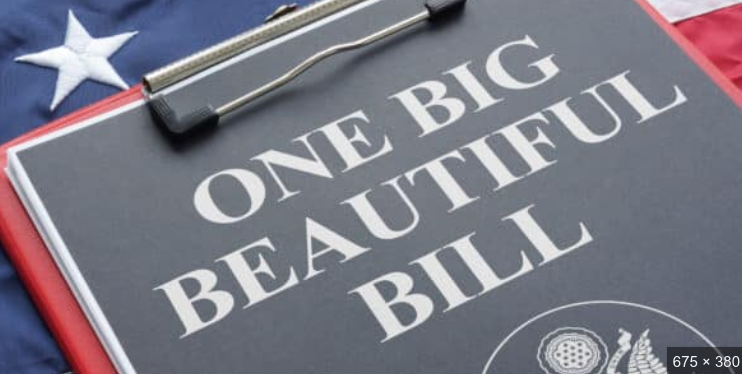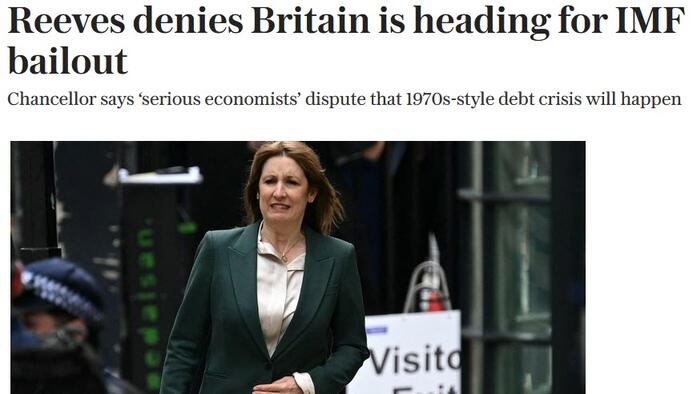One Big Beautiful Bill(BBB) could make US Credit Rating BBB?
In light of recent developments most notably the passage of the so-called "Big Beautiful Bill" alongside persistent fiscal imbalances, eroding monetary credibility, and political dysfunction, questions arise about how long the U.S. can maintain its top credit standing.

The United States has long enjoyed top-tier credit ratings, often resting at AAA or just below. However, in light of recent developments—most notably the passage of the so-called "Big Beautiful Bill"—alongside persistent fiscal imbalances, eroding monetary credibility, and political dysfunction, questions arise about how long the U.S. can maintain its current credit standing.
The "Big Beautiful Bill":
A Catalyst for Fiscal Deterioration The recently passed legislation, dubbed by proponents as the "Big Beautiful Bill," includes expansive government spending with limited offsets or revenue generation. The bill adds trillions to the national debt through entitlement expansions, industrial subsidies, and tax cuts with questionable growth assumptions. While proponents argue it will stimulate long-term growth, the near-term reality is a substantial increase in borrowing without corresponding productivity gains. These kinds of structural deficits often precede sovereign rating pressure.
Debt-to-GDP: A Red Flag Ignored
The U.S. debt-to-GDP ratio now exceeds 120%, a level typically associated with either junk-rated economies or heavily distressed sovereigns. In comparison:
- Mexico (BBB) maintains ~50% debt-to-GDP
- Portugal (BBB+) is below 110% and on a downward trajectory
- Italy, often downgraded due to similar ratios, holds a lower credit rating
While the U.S. benefits from dollar dominance, this long-held advantage is increasingly under scrutiny.
Rising Rates, Falling Demand
U.S. Treasury auctions are showing weakening demand, especially from foreign buyers. The Fed has moved from quantitative easing to quantitative tightening, and major holders like China and Japan are reducing exposure. This forces the Treasury to offer higher yields to attract buyers, driving up debt servicing costs. If interest payments begin to crowd out discretionary spending, the fiscal position may begin to resemble that of lower-rated peers.
The Erosion of the Dollar's Reserve Privilege
The dollar remains dominant, but its share in global reserves has declined from 71% in 1999 to under 59% today. Countries are increasingly pursuing bilateral trade in local currencies, gold accumulation is rising, and talk of de-dollarization is now a mainstream geopolitical narrative. This raises the question of whether the U.S. can continue relying on unshakable demand for its debt.
Political Dysfunction and Governance Risk
Repeated debt ceiling standoffs, government shutdown threats, and polarized policymaking reduce confidence in U.S. governance. Moody's and Fitch have cited political instability as a negative factor. These are the types of institutional risks often associated with countries rated in the BBB band.
Monetary Policy Capture
The Federal Reserve is under intense political pressure to lower rates despite inflation concerns. While nominally independent, the Fed's recent dovish pivot in the face of persistent fiscal expansion and market fragility suggests increasing fiscal dominance. Encroachments on central bank independence are closely watched by credit agencies when assigning sovereign ratings.
A BBB Profile Emerging?
The U.S. continues to benefit from legacy prestige and structural centrality in global finance. But when examined through the lens of key credit metrics—debt burden, fiscal sustainability, market dynamics, and political governance—many characteristics mirror those seen in BBB-rated nations. While a downgrade is not inevitable, the underlying risk factors are converging in ways that warrant closer scrutiny. If these trends persist or deepen, the case for a lower sovereign rating may become harder to dismiss.











